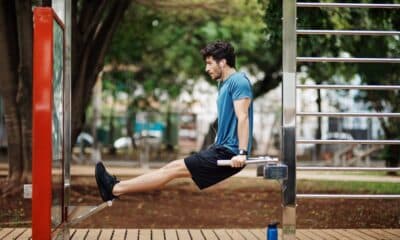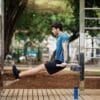General
The 6 Single-Leg Physical Exercises Every Runner Should Do!

Physical Exercise: RUNNING IS A SINGLE-LEG game, At any second, you have just got one foot onto the floor. “In Running, you’ve got to have the ability to absorb effect, conform to irregular terrain and then establish yourself from 1 foot,” describes certified strength and conditioning expert Janet Hamilton, an exercise physiologist with Running Powerful at Atlanta. “In walking distance there’s almost always a concise period of dual service when the feet are on the floor, but with jogging there’s a flight period without a period of dual support.
“This makes single-leg strength-training exercises, where one foot remains planted on the floor, particularly crucial for athletes. Single-leg strengtheners are just like a rehearsal for conducting, says certified trainer Lisa Niren, manager of programming and content to your running-focused Studio program. Single-leg exercises prepare your body to manage the special challenges of conducting from 1 foot to another, such as controlling equilibrium.
What is Greatest: Cardio or Weight Lifting?
In runners, bad stability from the hips, ankles and knees are connected to all from lackluster race endings to overuse injuries, like patella femoral pain along with lower spine issues.
At a 2016 study printed in the journal Manual Treatment, strengthening the hip abductors increased symptoms of plantar fasciitis, a frequent heel pain felt by athletes. The hip abductor muscles, that are located in the face of the cool and operate to stabilize the femur from the anus, work mostly whenever the body is at a single-leg posture.
Single-leg exercises instruct stability not only from the torso, but at the center too, Niren states. A solid core improves running shape and posture to significantly boost efficacy, while also enhancing the flow of electricity between the upper and lower parts of the human body. For single-leg sports, then the arms nevertheless contribute substantially to running pace and functionality.
When incorporating single-leg exercises in your fitness routine, Hamilton urges prioritizing form first of all. “The secret is to function to the point at which you feel that the muscle fatiguing and feel your form may sag if you keep moving, then stop,” she says, caution, “Cease before you eliminate form. You wish to train the ideal motor routines, maybe not the wrong ones”
Because of this, it is ideal to execute the exercises with minimal to no fat initially and find out appropriate movement patterns prior to adding immunity. “As you become strong with the shape and you are not wobbling about, raise repetitions,” she states. “For most runners, even targeting a pair of 30 reps on one leg is still really a great and reasonable aim.” This way, you’re able to mostly work the human body’s slow-twitch muscle fibers which are most busy during endurance events such as jogging.
Keep reading for six basic, runner-specific single-leg exercises to enhance core strength, boost equilibrium and prevent harm. Stand with your feet together, and stretch 1 leg and both arms in front of it. From that point, flex the knee and hip from the leg to lessen your entire body as far below the ground as you can without breaking shape or tilted to one side. Pause, then push the heels of the planted foot to come back to get started.
Remember this is a sophisticated play, which means that your freedom and thickness will mostly determine the number of repetitions you’ll have the ability to carry out. Begin with lowering to a seat that is about knee-height. As soon as you perform 15 repetitions on each leg, then fall to a squat till it’s possible to reduce all of the way into the ground. Stand with your feet apart and also an optional 10-pound pounds in 1 hand. Lift the top of the identical facet of the body off of the ground. From that point, push the cool of your implanted leg to decrease your torso toward the ground, as you lift your leg for a counterbalance.
Let a little bend at the knee of the planted leg. Your arm (or burden) must hang straight down before you, nearly skimming your leg as you reduced. Pause, then push the heels of your implanted leg to lift yourself back into position. Once you’re able to perform 15 repetitions with the suitable form, raise the weight used on your previous few repetitions for an additional challenge. Rectal step-ups. Stand alongside a sturdy seat or measure, and put one foot planted firmly together with it. Move your weight on that foot, in order there is not any weight at the foot that is on the ground. From that point, push through the heels of your head to boost to a standing posture, along with your trailing foot dangling in accord with your foot. Pause, then slowly lower your observation foot straight back toward the ground without placing any weight to the foot.
Start with 10 repetitions per side, employing a measure height which permits you to carry out all repetitions with good shape before raising the amount of laps Afterward, raise the amount of repetitions to 20; after you have mastered this, maintain weights in either side or boost the measure height. Secure 1 end of a resistance ring to the bottom of one leg and another end to a solid object only over the ground. Stand with your toes apart beside the anchor line so the banded ankle is straight away from your anchor point and there’s pressure in the ring. Maintaining your knees directly , increase your leg from both sides of the body away from your anchor point. Start with 10 repetitions and advancement to 30 repetitions to challenge yourself.
Lift 1 foot from the ground. From that point, push your implanted heels and then squeeze your glutes to boost your hips up toward the ground until your body forms a straight diagonal line from the shoulders into the back of the planted foot. Aim for approximately 30 repetitions per side, assigning form within the rep count.
Single-leg stylish hitches. Stand on the border of a solid chair or measure, and put all your weight on one leg. Allow another leg hang from both sides of the seat, keeping both feet in accord with one another. From that point, together with your implanted leg completely straight, drop your stylish to reduce your dangling foot a few inches beneath the ground. Pause, then increase your hip before your dangling foot is only higher than the implanted one. Return to Begin. Aim to do around 30 repetitions per side without sacrificing balance.


















